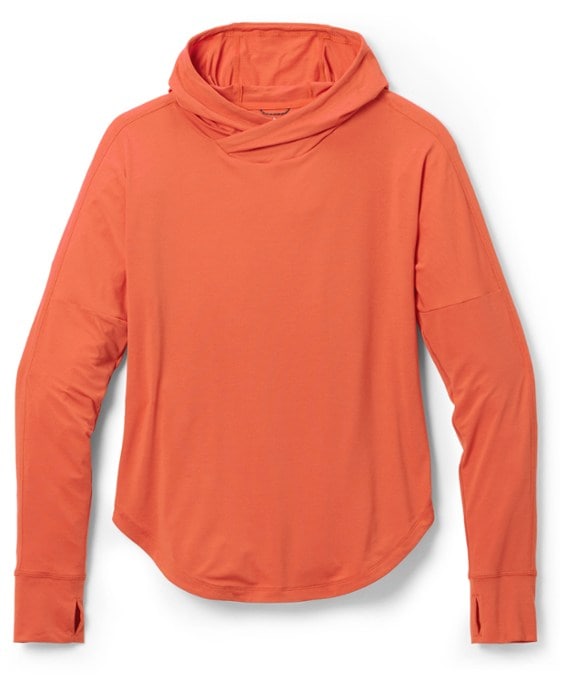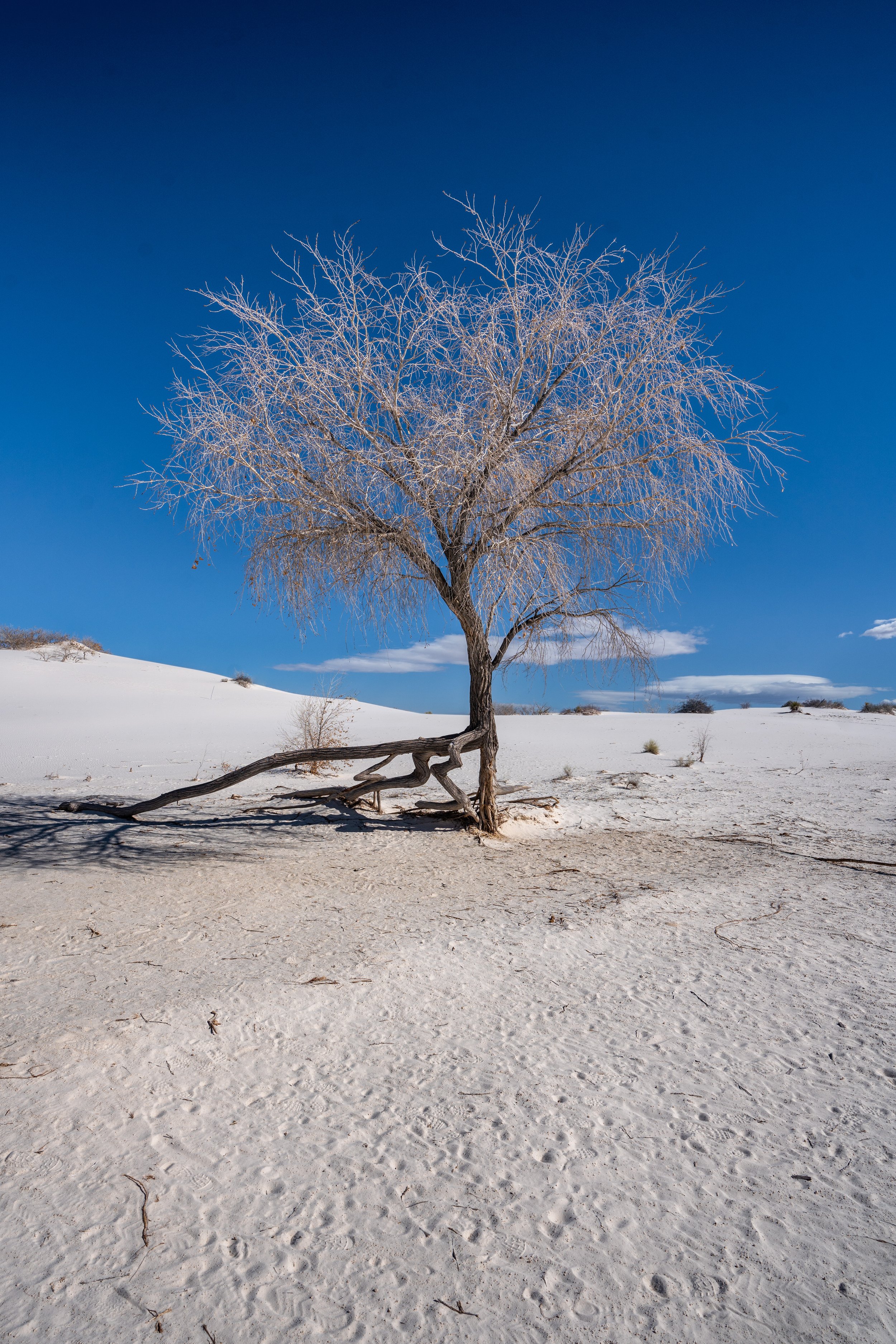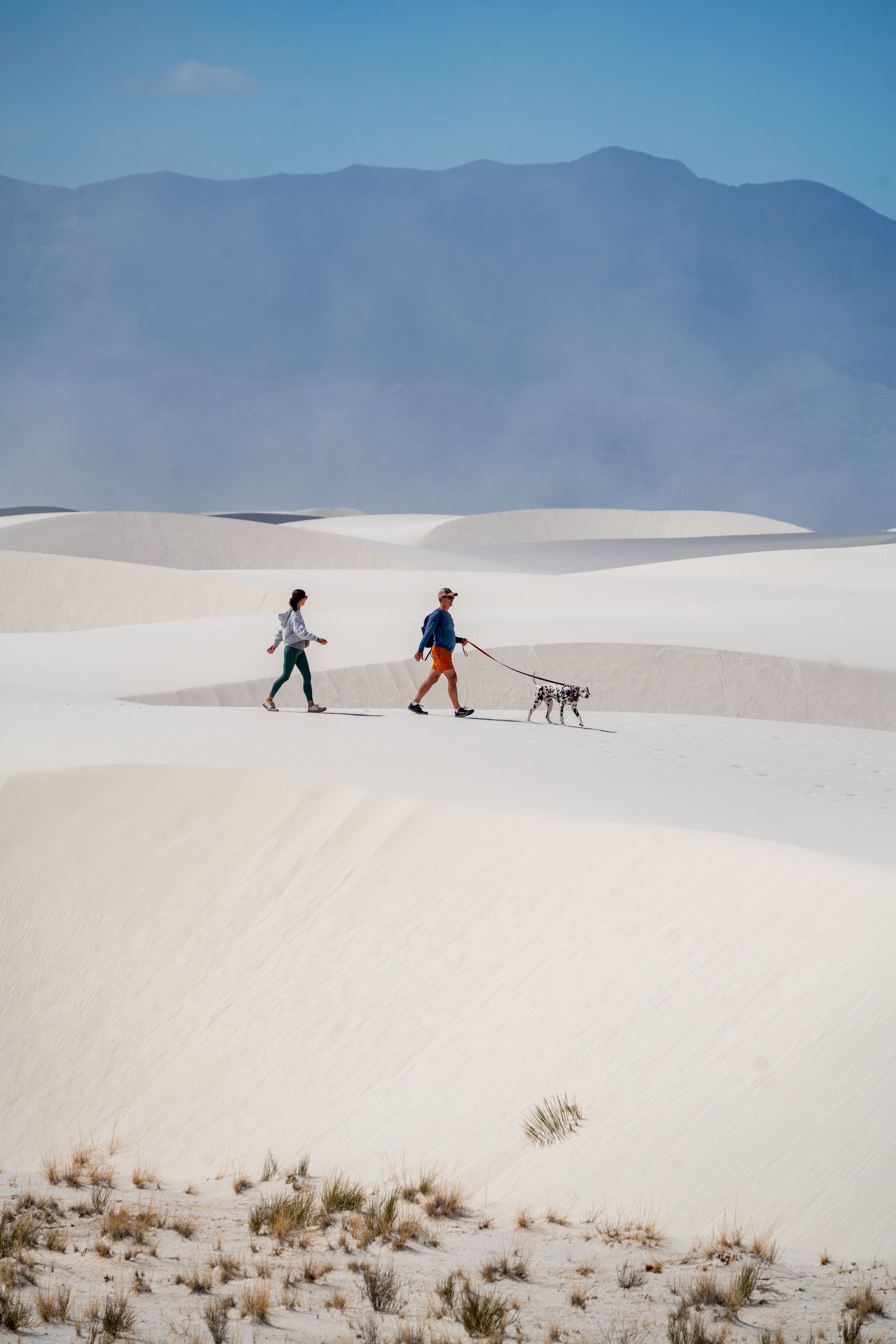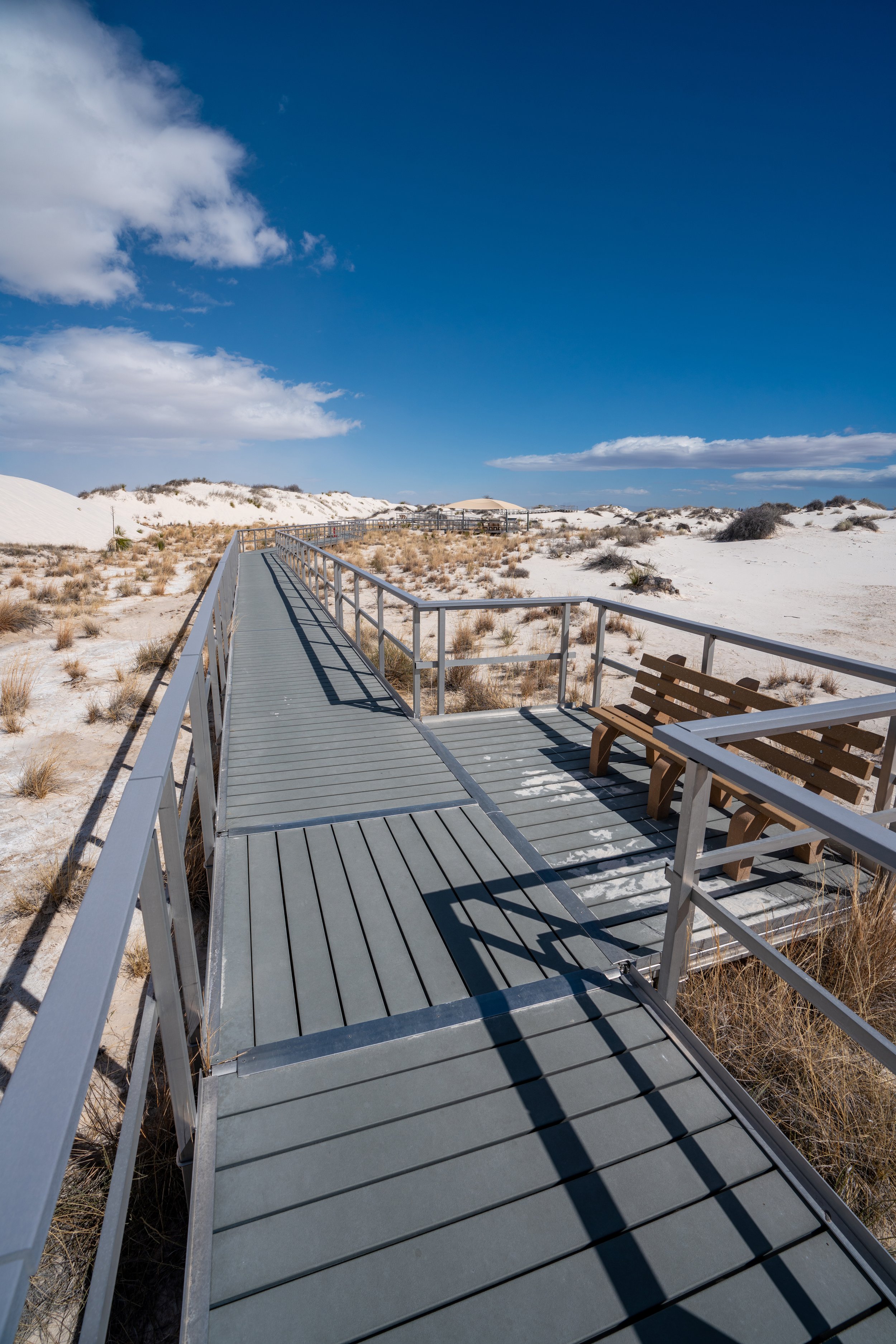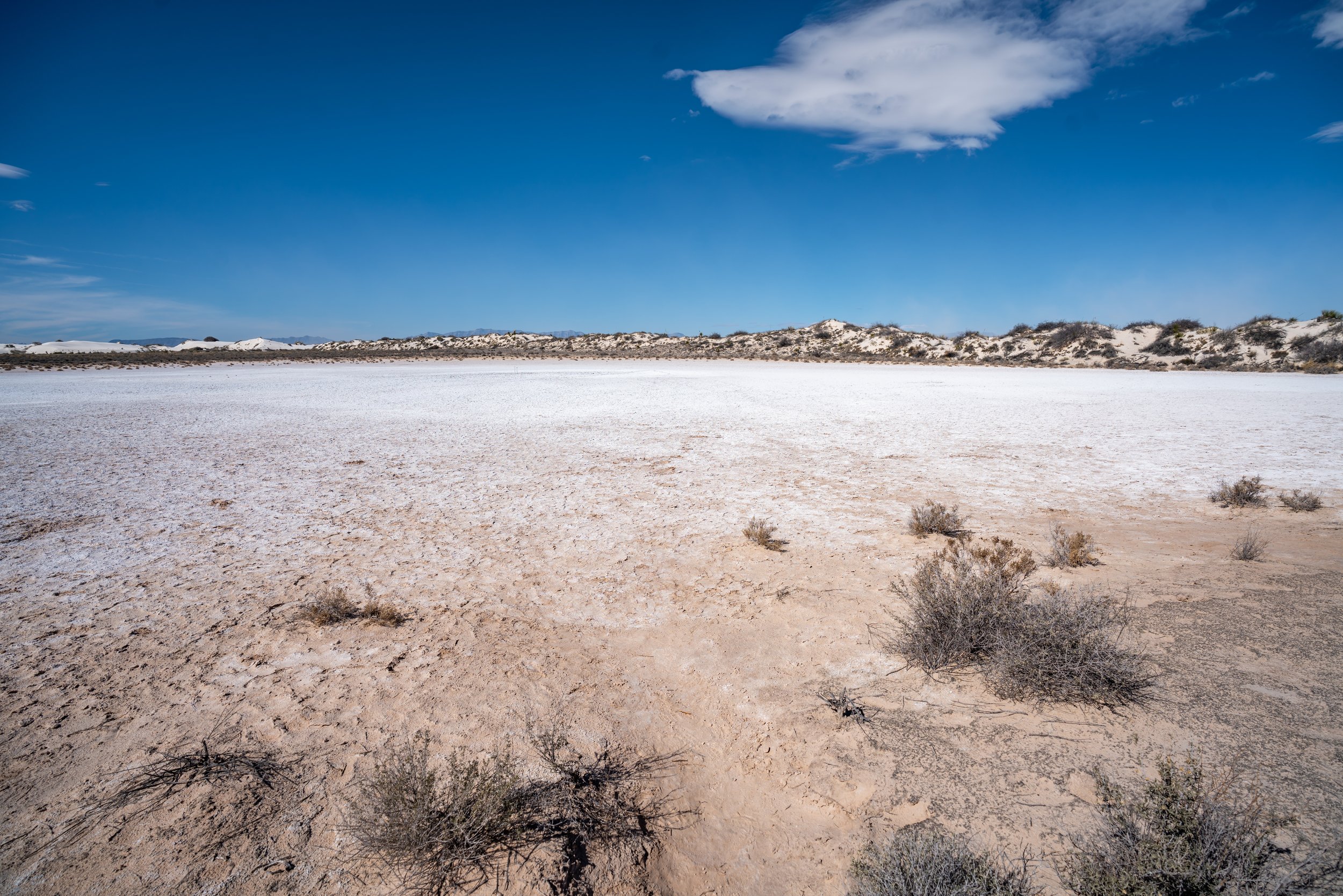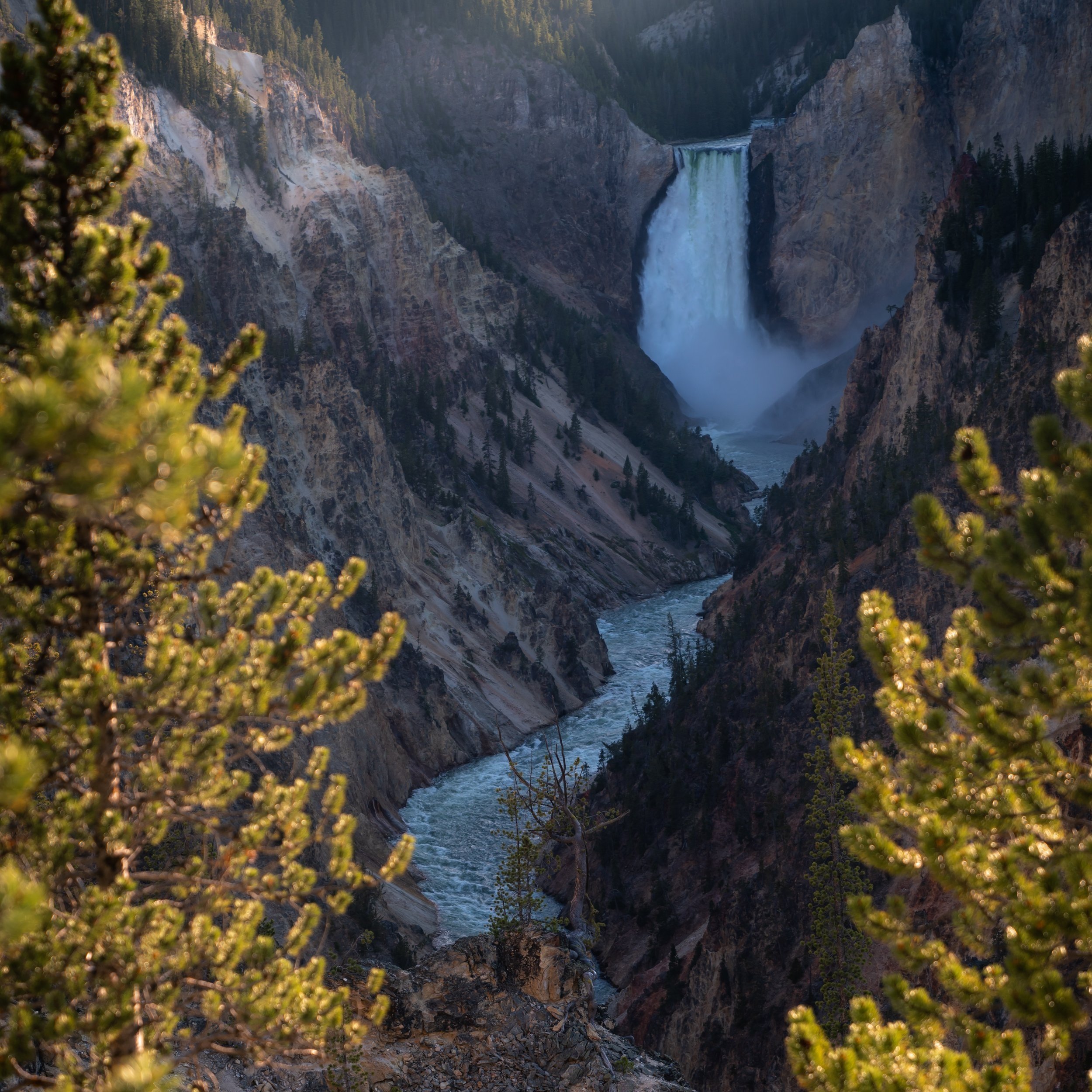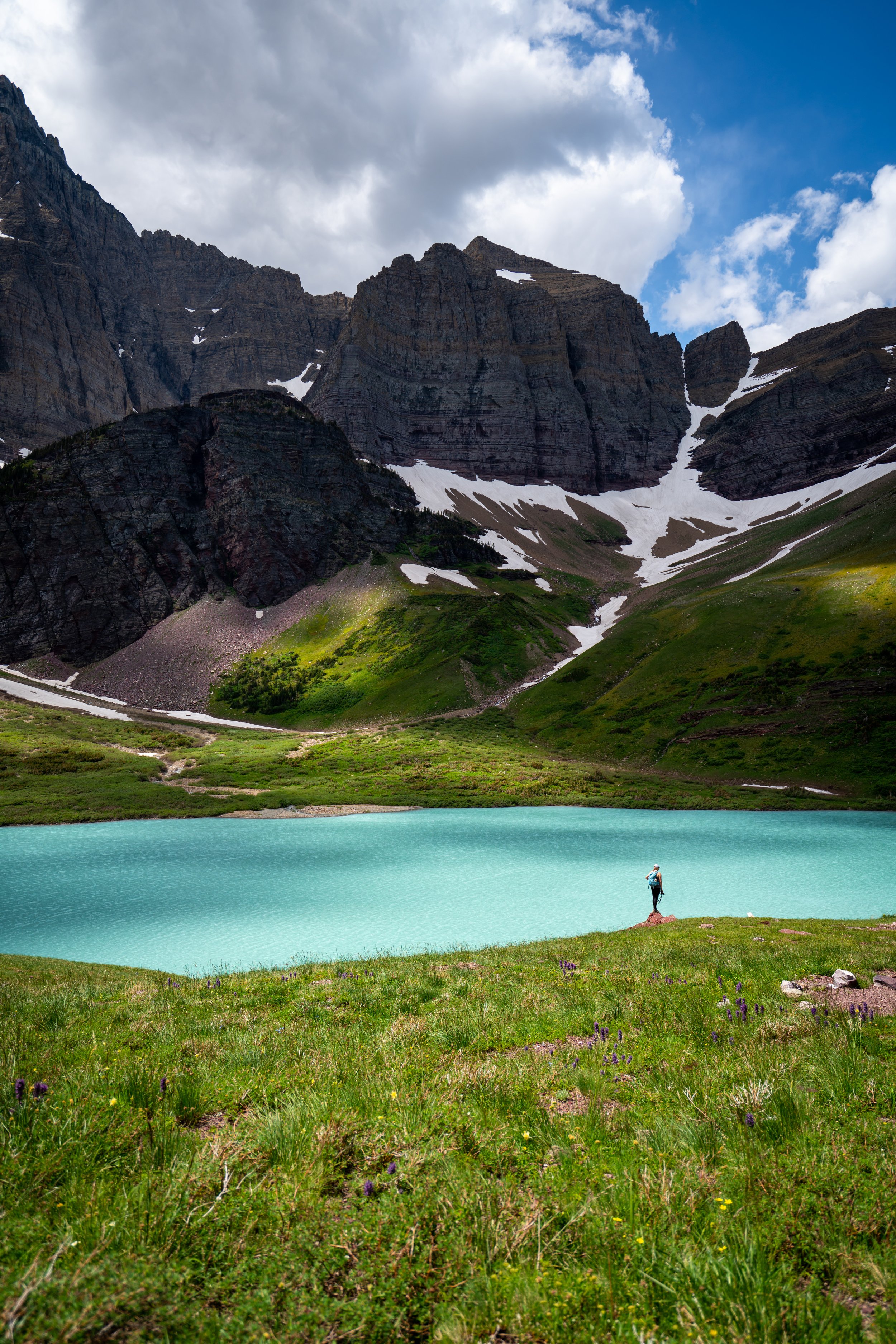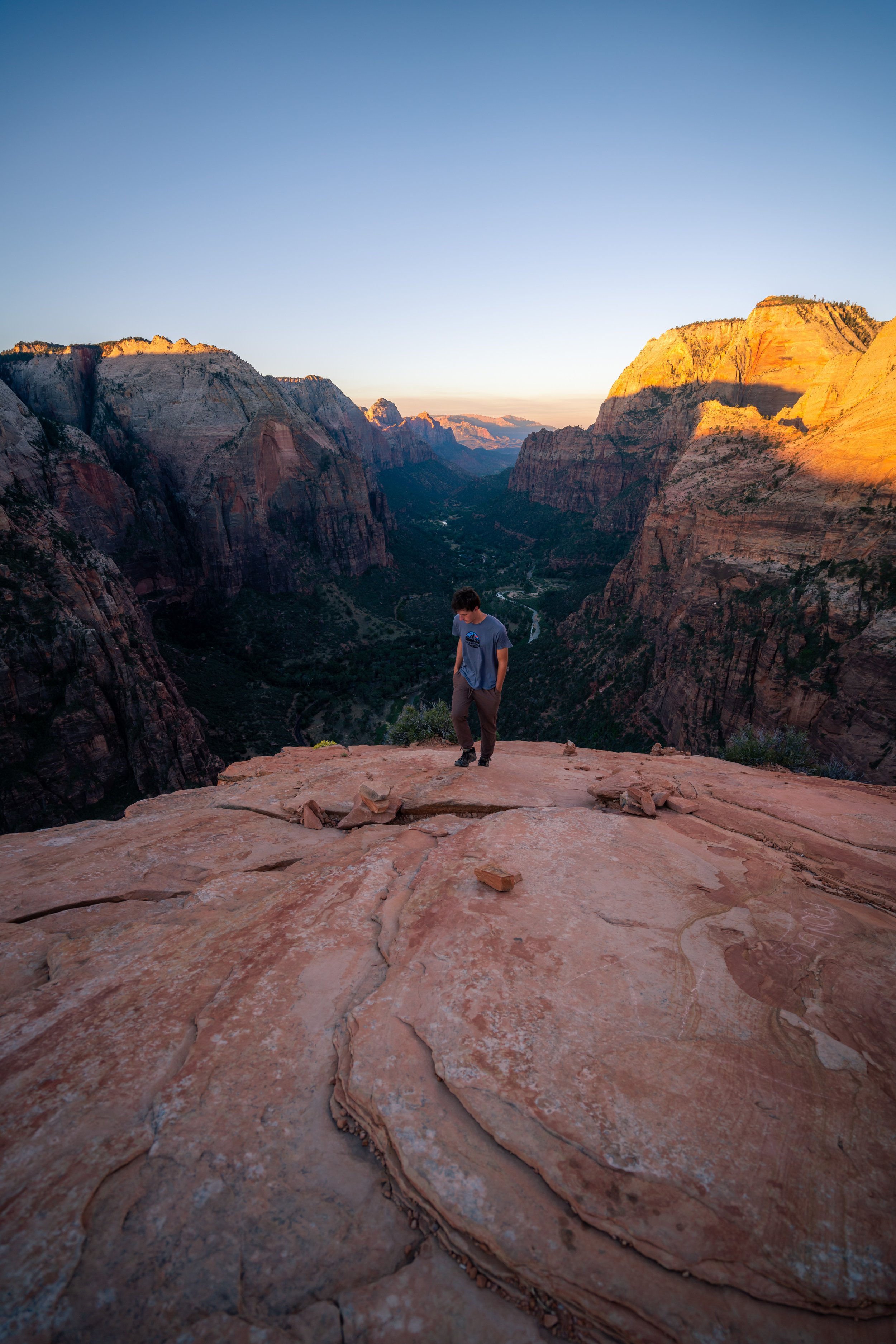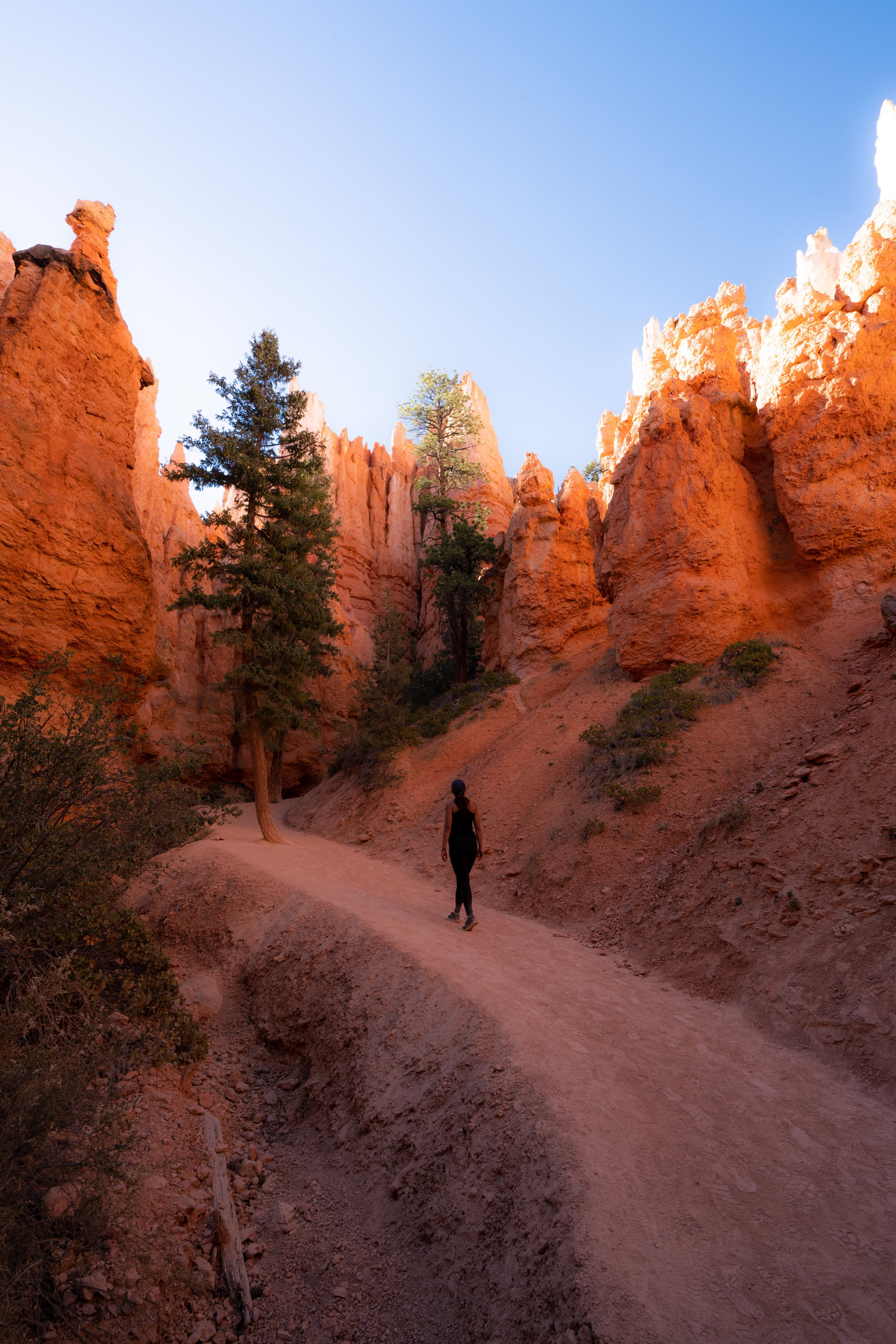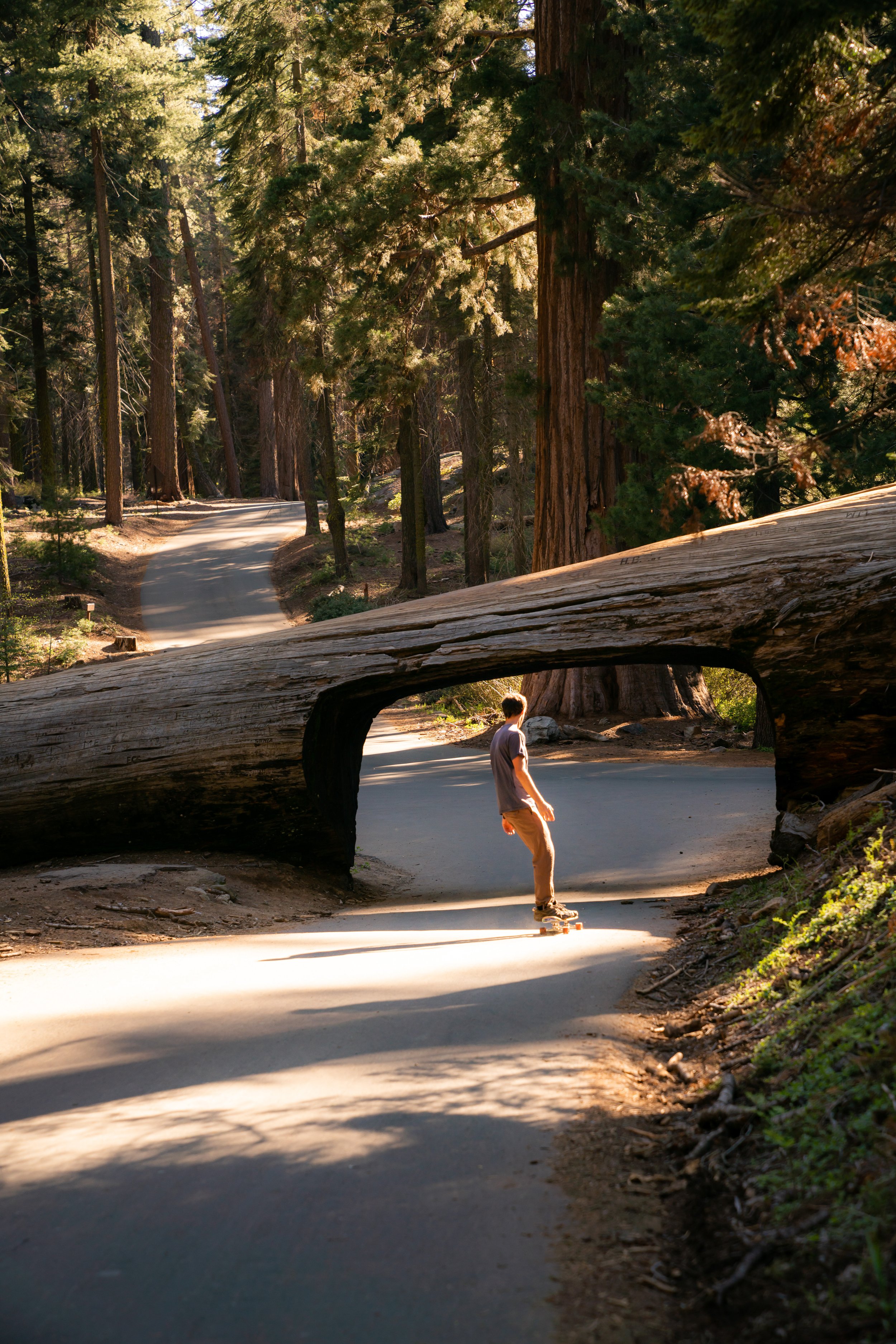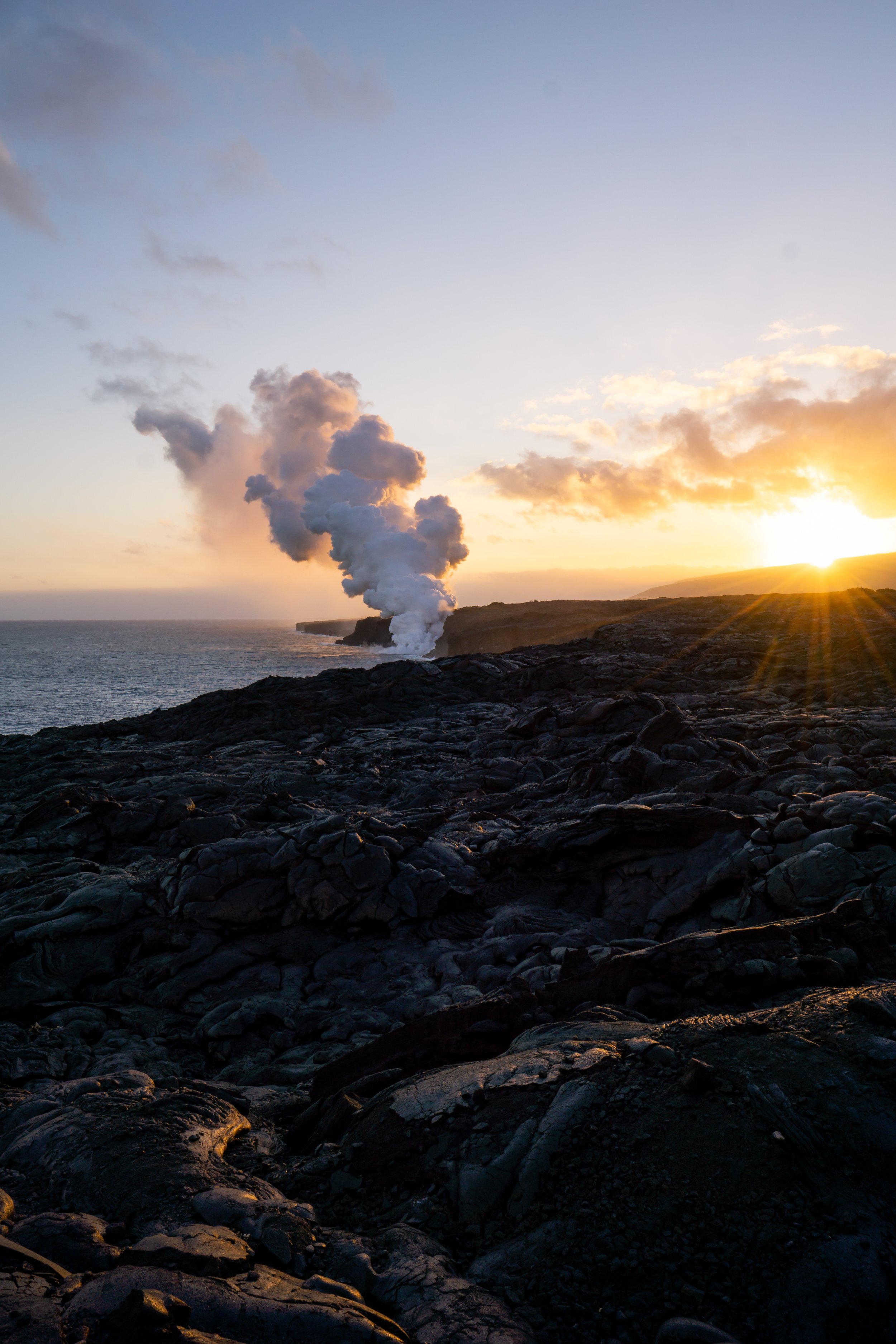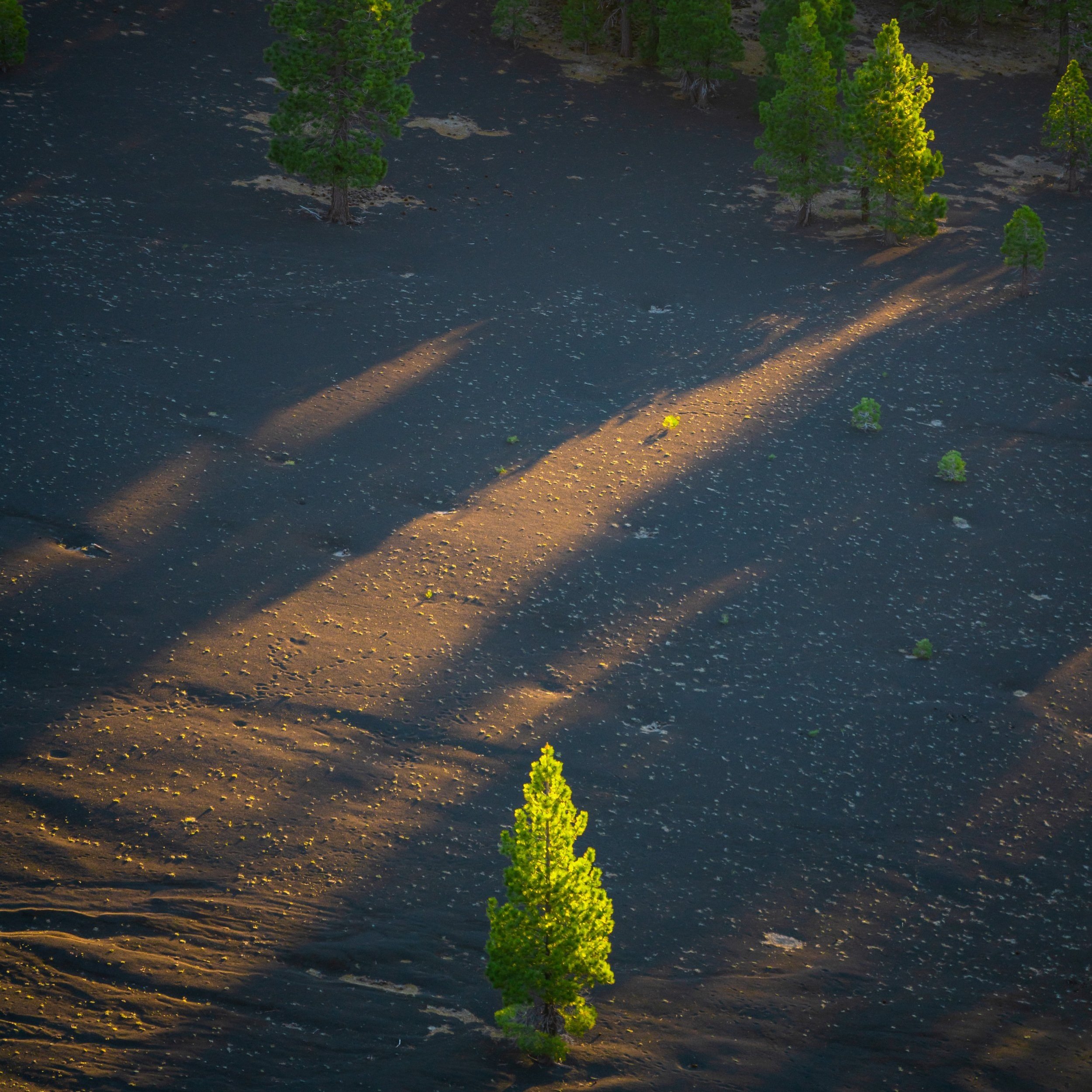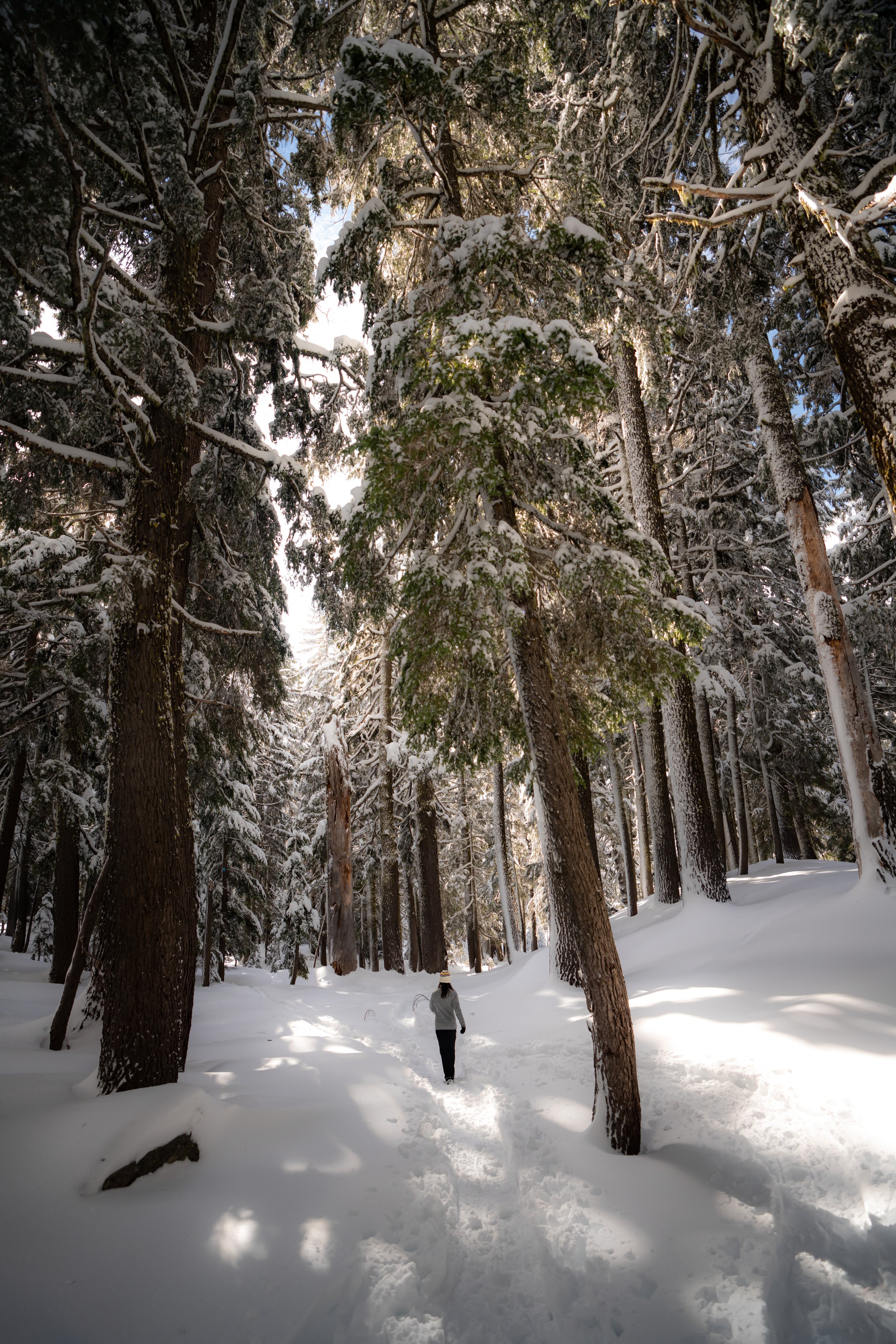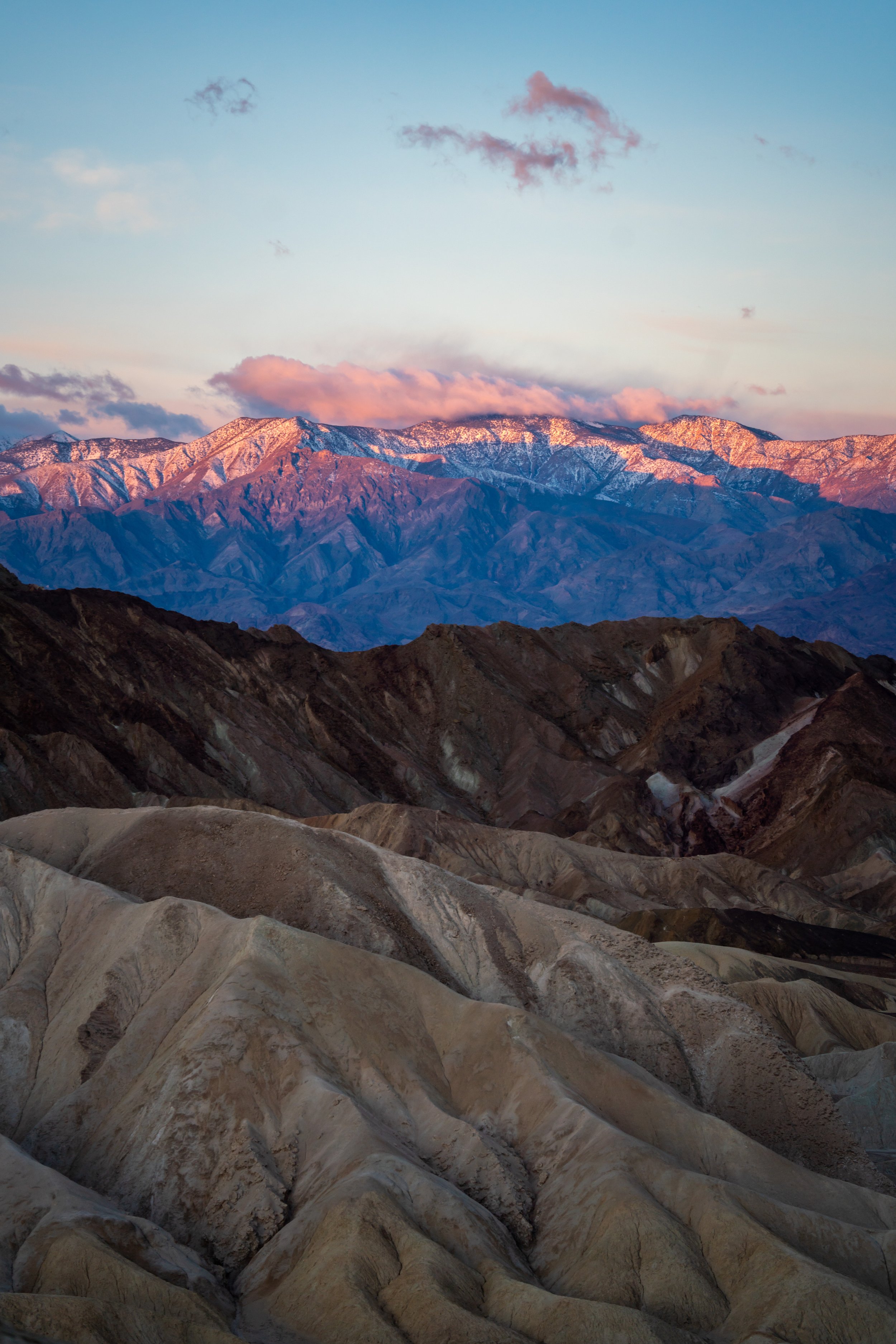Hiking the Alkali Flat Trail in White Sands National Park
Distance: 4.6 miles / 7.4 km
The Alkali Flat Trail is easily one of the most beautiful day hikes in White Sands National Park, and it’s the best trail to truly immerse yourself in the vastness that is White Sands!
However, the Alkali Flat Trail is the longest-established trail in all of White Sands, and being the case, it is the most challenging day hike in the park.
That being said, I don’t normally classify hikes as being difficult based on distance alone, but hiking in White Sands National Park is unlike anywhere else that you’re likely accustomed to.
I say this because all of the established trails in the dune fields don’t follow a 'trail' in the sense of a path, but rather, the Alkali Flat Trail, and others, follow a series of spaced-out trail markers placed in the dunes to navigate from point to point.
Therefore, when one of these markers gets knocked down by the wind, buried, or visibility is limited because of the wind, navigating from point to point can be challenging and sometimes dangerous—especially during the hotter summer months!
This is all to say that I still highly recommend hiking the Alkali Flat Trail. However, it should only be undertaken by those with good hiking skills and navigational awareness in order to stay safe in this beautiful but unforgiving landscape.
Alkali Flat Trailhead Parking
The Alkali Flat Trailhead is the furtherest trailhead off Dunes Drive, located about 7.4 miles (11.9 km) from the visitor center.
The trailhead area is one of the largest parking areas in all of White Sands National Park because visitors not only come here for the hike, but nearby the dunes are a great drive-up location to go sledding!
Google Maps Directions: Alkali Flat Trailhead
Hiking Checklist - White Sands
Here is a complete list of must-have things that you will want for any hike in White Sands National Park.
Osprey 3L Water Bladder - The Osprey 3L water bladder is the most universal hiking and backpacking water bladder on the market, and it’s my go-to because of the slide-off seal that allows it to be quickly filled from the top. Additionally, individual parts are easily replaceable, such as the bite valve.
Blister / Heel Protectors - I swear by these cheap, amazing heel protectors to prevent blisters for nearly every kind of hiking and backpacking that I do!
Black Diamond Headlamp - Personally, I recommend the Black Diamond Storm because it is one of the brightest, lightest, and longest-lasting headlamps on the market—and trust me, the weight-to-battery-life ratio really does matter!
Hiking / Trail Running Shoes - Depending on the type of trail, I prefer to use either the Keen Targhee for longer, more rugged hiking or the HOKA Zinal Trail-Running Shoe for lighter, less intense trails. In either case, both have been amazing to me for many years across countless environments, and both can be found in men’s and women’s sizes. - (Men’s Keen / Women’s Keen) (Men’s HOKA / Women’s HOKA)
Waterproof Rain Shell - You never know when it may rain, and I’ve learned over the years that a rain shell is far better than a rain jacket. By this, I mean that it’s best to have something that the water will roll right off of, which is why I recommend the Patagonia Torrentshell 3L available in both men’s and women’s sizes.
Sun Shirt w/ Hood - A quality sun shirt can be your best friend on a trail with minimal shade, which can be found in both men’s and women’s sizes.
High SPF Sunscreen - Packing high-SPF sunscreen is a must for long days outside!
Hiking the Alkali Flat Trail
The Alkali Flat Trail, also called the Alkali Flat Loop Trail, begins to the west of the parking area where the trail splits into the loop, about 0.1 miles (0.2 km) into the hike.
The importance of hiking with at least 3-4L of water cannot be understated on the Alkali Flat Trail, especially if you are visiting White Sands during the warmer summer months!
With that in mind, it’s best to try and hike the Alkali Flat Trail during the cooler hours of the day if you are visiting during the summer months, because the dangers associated with the sun and heat-related exposure are far more elevated.
This is exactly why navigating the Alkali Flat Trail and others, like the Backcountry Camping Loop, can be so challenging!
On windy days like this, footprints can disappear quickly in the heart of the dune field.
Once in the heart of the Barchanoid Dune Field, the opportunities for beautiful photos are seemingly endless.
One of my favorite photos to take in a landscape like this is a compression shot, where someone stands a few ridges away from the photographer, and the scene is compressed using a longer lens of 70mm or likely much greater.
Believe me, I do see the limitation that these similar-looking photos have to one another, but at the least, I hope they give an idea of what some less-than-ideal conditions look like when the sand gets stirred up by the wind.
In my opinion, some of the most beautiful photography angles can be taken along the edges of these untouched dunes, but for most conditions during the day, a polarizer is necessary because the white sand acts like snow, essentially blowing out the shot if you aren’t using one.
That being said, the polarizer below is one that I’ve trusted and used for many years, which is very universal for a variety of camera lenses.
If you look closely, you can see at least three different trail markers in the photo below, which I hope helps to understand how easy it can be to get off track—especially when visibility in the dunes is limited!
Alkali Flat
Contrary to what the dunes in White Sands National Park may seem like, the sand dunes are not endless; hence the name, Alkali Flat.
In short, the Alkali Flat Trail traverses through the heart of the dunes until it almost abruptly ends on the Alkali Flats, a dry lakebed of Lake Otero, which is an ancient 1,600-square-mile lake that covered much of the Tularosa Basin.
From the start of the Alkali Flats, the trail only extends for another 0.25 miles (0.4 km) until the sign in the next photo below.
Zone of Co-operative Use - (Restricted Area)
The very far end of the Alkali Flat Trail is the beginning of the Zone of Co-operative Use, a restricted area that is accessible by permit only.
To give further context, White Sands National Park was established in December of 2019 as part of the 2020 National Defense Authorization Act because the original boundaries of the former White Sands National Monument were established prior to the expansion of the White Sands Missile Range.
Over time, there were logistical issues and safety concerns about military testing activities that occurred in close proximity to public areas. Therefore, a land exchange was sought as a solution that benefited both parties. The military received approximately 2,800 acres of land, formerly within the National Monument’s boundaries, and the National Park Service acquired roughly 5,700 acres of land that used to be part of the missile range, expanding the overall park area and moving some military boundaries further away from public areas, creating a more cohesive area for preservation and visitor experience.
This is all to say that venturing beyond this sign was not only illegal but also very dangerous on account of the remoteness of the vast, harsh, and unforgiving desert.
On the return hike, the Alkali Flat Trail begins by splitting to the left, away from trail markers shown above.
That being said, both sides of the loop are generally quite difficult to see from the other, with the exception of the very beginning and far ends of the trail.
In my experience, the north side of the loop was a little trickier to navigate, but I’m sure this can change over time, as the National Park Service adjusts these trail markers.
The one thing I have yet to mention is to be careful when running down the dunes, like in this first photo to the next.
It’s not very apparent, but the bottom of the dunes can feel as hard as concrete, meaning that with each step you may be used to some give in the sand until you’re abruptly met with a surface that has no give.
This hard transition can really increase the risk of serious injury, which is why I recommend slowing down when you’re near the bottom of a sand dune.
This is where the Alkali Flat Trailhead starts to become visible once again.
Overall, I highly recommend hiking the Alkali Flat Trail, as no other day hike in White Sands feels as immersed in the beautiful white sand dunes as this 4.6-mile (7.4 km) trail.
However, that does not go without saying that the out-and-back loop to the Alkali Flats is the most challenging and remote established trail in the park.
Therefore, I highly recommend coming to White Sands with a good headlamp, especially if you plan to watch the sunset in the dune field.
All said, the headlamp options below are the ones that I use and trust for my own adventures, and I would never recommend anything that I don’t personally use!
More White Sands Adventures
If you’re interested in reading about some more amazing adventures within White Sands National Park, check out my separate posts below!
Best Way to Find Places to Stay!
Wherever I travel, I love to start my search for places to stay on VRBO.
Even if I don’t end up booking through them, I think it’s one of the best ways to see what’s in the area!
Best Way to Book Rental Cars!
I travel quite a bit, and I know firsthand that finding a good rental car deal can be a challenge, but that’s why I recommend comparing all of your options with Discover Cars.
In short, Discover Cars is a well-known, reputable business that allows you to search for the best deal across companies, and they have the best full-refund cancellation policy I’ve ever seen, valid up to 72, or sometimes even 48, hours prior to your reservation!
Book Here: Discover Cars
Safety
When it comes to staying safe in White Sands National Park, the safety concerns are generally centered around a few main things.
First and most obvious, the summer heat/ dehydration are nothing to take lightly in southern New Mexico. Like Death Valley, White Sands National Park is often seen as an off-season park compared to others, like Yellowstone or Grand Teton, where the best time to visit is during the summer.
That being said, White Sands National Park is a place of extremes, with summer temperatures that can soar well above 100ºF (38ºC) and winter temperatures that drop as low as 10ºF (-12ºC).
However, what this doesn’t mention is how much greater and faster the risk of sunburn can be in this extreme environment. What I mean is that the white gypsum sand can act like a glacier, where the risk of serious sunburn is intensified because of the solar reflection off the white surface.
Therefore, arriving prepared with plenty of sunscreen, water, and good sunglasses is not only recommended but essential for a safe visit. Additionally, be aware that the visitor center is the only place in White Sands National Park to get water!
The next thing that poses the greatest risk in White Sands is simply getting lost. The vast majority of trails within the park are in the dune field, and being the case, they are only marked by spaced-out trail markers that stick out of the sand. However, these markers can and do fall over and get buried by the sand, meaning that trails can be difficult to follow—especially when it’s windy and visibility is limited.
Finally, there are a few rare but venomous reptiles to be aware of, including the Prairie and Western Diamondback Rattlesnake, and the mildly venomous Sand Scorpion, which is said to feel similar to a bee sting.
As always, find the most up-to-date information and conditions on the official National Park website.
National Park Service: White Sands National Park
U.S. National Parks Pass
Did you know that the same America the Beautiful Pass that grants access to all 63 U.S. National Parks can be purchased in advance at REI?
Yes, you can save time when you arrive by purchasing your National Park pass, along with your other outdoor gear, at REI before traveling to the park!
More U.S. National Parks
If you’d like to read more about some of my best recommendations when visiting other U.S. National Parks, check out some of my other posts below!
Disclaimer
All information provided on this blog is for informational purposes only and is not intended to be a substitute for information or advice from qualified professionals or managing agencies.
Noah Lang Photography LLC makes no representations or warranties regarding the accuracy or completeness of the information provided here, and readers should use their own discretion, judgement, and seek professional advice where it is appropriate.
Furthermore, Noah Lang Photography LLC shall not be held responsible for any injuries, lost individuals, or legal issues arising from the use of information provided on this website, and if applicable, the above safety disclaimer should be referenced to provide a generic overview of the risks involved.
All said, the content on this blog is for the sole use of Noah Lang Photography LLC, and unauthorized use or reproduction of this content is strictly prohibited.
Disclosure
This post is not sponsored.
However, some of the links in this post are affiliate links, which means that I may earn a small commission if a purchase is made through one of those links. This commission comes at no additional cost to you, and I only recommend products that I personally use and believe will add value to my readers. Thank you for your support, which enables me to continue creating more!
To read the full privacy policy, click here.

About This Blog
Noah Lang Photography, also known as @noahawaii, is 100% reader-supported!
I do not accept guest articles or sponsored content of any kind on my blog, which is why, if you enjoy the outdoor and travel content I create, please consider buying me a coffee!
I appreciate your support, which helps me continue to keep this blog alive!












